
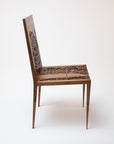
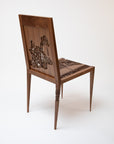
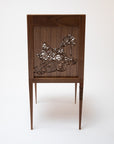
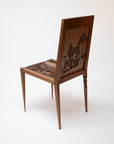
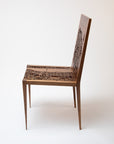
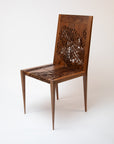
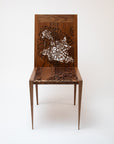

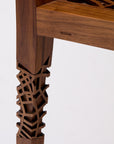
Wood Chair, Boston - Prototype (Walnut)
This is a one-of-a-kind early prototype. Prototypes are sold as-is and have imperfections from testing and display. They are not guaranteed to withstand regular use and are sold to be displayed as art.
This Wood Chair prototype features four maps showcasing how Boston has evolved over the past 390+ years. This prototype is made in Walnut.
Material: Solid Wood, Plywood
Dimensions: 20⅞in L x 17in W x 37in H
Weight: 11.8lbs
Color: Walnut
Map Scale: 1in = 500ft
Prototypes are one-of-a-kind pieces that were handcrafted during our earliest days of design development. They are truly unique, fine art objects that can be shipped to your desired location upon ordering. Your lead time will be determined upon finalizing logistics.
Made From Four Layers of Historical Maps
OCCUPYING OVER 390 YEARS OF BOSTON HISTORY
Top Layer
2023
Boston stands as a global leader in education, research, and technological innovation. Prestigious institutions like Harvard and MIT drive advancements in biotechnology, artificial intelligence, and healthcare. A diversified economy spanning finance, technology, and medicine anchors the city’s growth.
The Seaport District emerges as a hub of innovation, attracting investment and development. Urban planning initiatives emphasize sustainability, expanding public transit and creating green spaces. Challenges such as housing affordability and climate resilience remain central to policy efforts. Cultural and historical preservation blend seamlessly with modern infrastructure. Boston continues evolving, reinforcing its reputation as a resilient and forward-thinking metropolis.
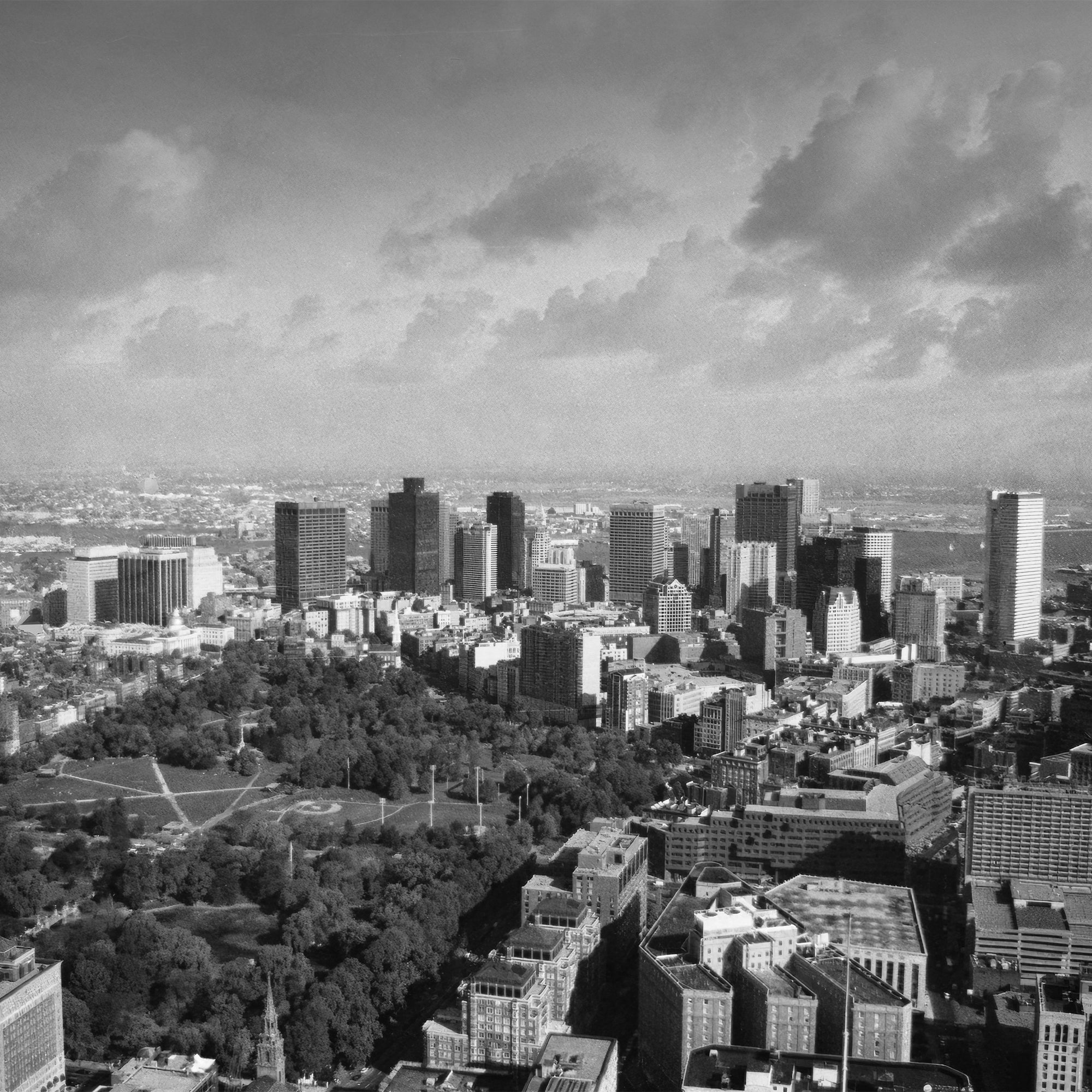
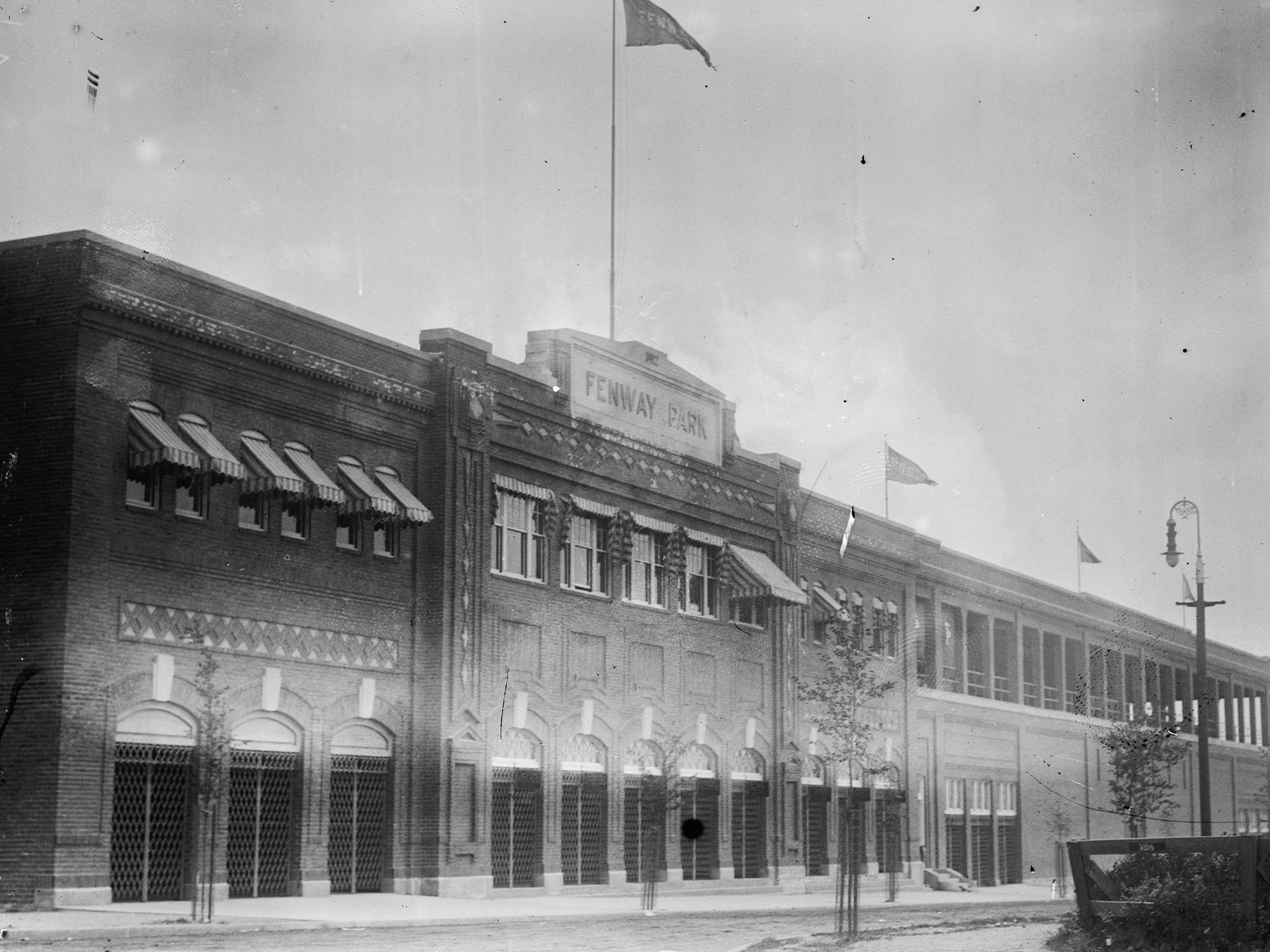
Second Layer
1912
Boston is a bustling industrial city undergoing rapid modernization and urban expansion. Iconic landmarks like Fenway Park are built during a period marked by increasing immigration, industrialization, and evolving transportation with streetcars and automobiles.
The city’s economy is powered by manufacturing, shipping, and finance, with diverse immigrant communities fueling its labor force. Despite social divisions along ethnic and class lines, sports and civic pride serve as unifying forces. Boston’s blend of tradition and modernity during this era lay a solid foundation for its evolving identity.
Third Layer
1770
Boston stands at the heart of rising tensions between American colonists and British authorities. Thriving in commerce and political activism, the city is sharply divided between loyalists and revolutionaries. British troops stationed in Boston enforce unpopular taxes, fueling resentment among residents. Violent clashes erupt, culminating in the Boston Massacre, a turning point in anti-British sentiment. Revolutionary figures like Paul Revere and Samuel Adams amplify resistance, spreading calls for independence. Protests intensify, leading to acts of defiance like the Boston Tea Party in 1773.
As opposition grows, Boston solidifies its role as a center of revolutionary thought. The city moves closer to becoming a flashpoint in the fight for independence.
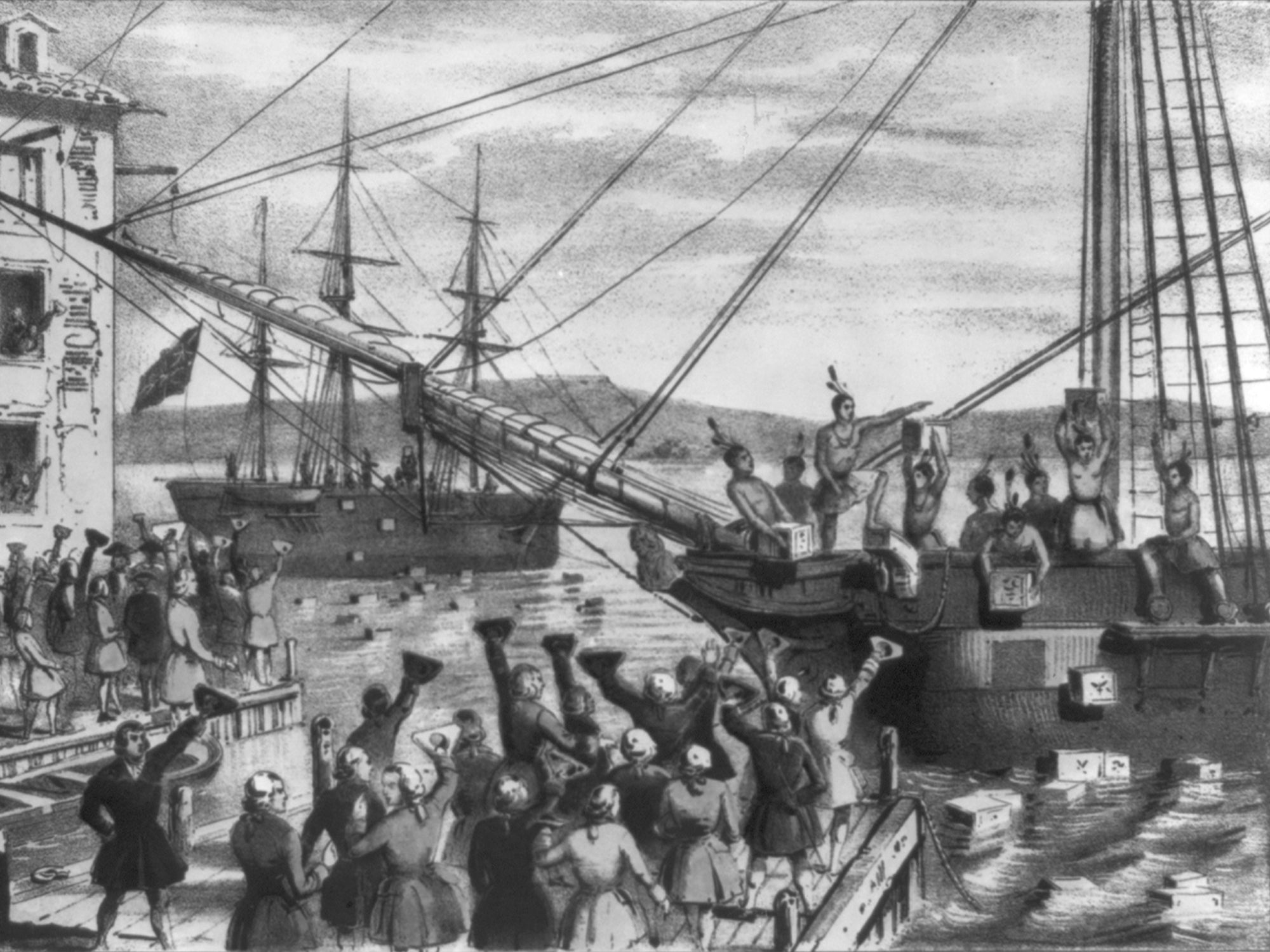

Bottom Layer
1630
Puritan settlers led by John Winthrop establish Boston as a key settlement in the Massachusetts Bay Colony. A natural harbor provides essential maritime access, supporting fishing and trade as the city’s economic backbone.
Strict Puritan governance influences daily life, shaping laws, education, and social customs. Timber houses, meetinghouses, and early public buildings emerge as the settlement grows. Despite the colony’s rocky soil, agriculture supplements trade, ensuring food security. Religious doctrine enforces a communal and disciplined social order, reinforcing the settlers’ vision of a "city upon a hill." Tensions with Indigenous peoples arise as colonists expand their territory.
Boston lays the foundation for its future as a major colonial center.
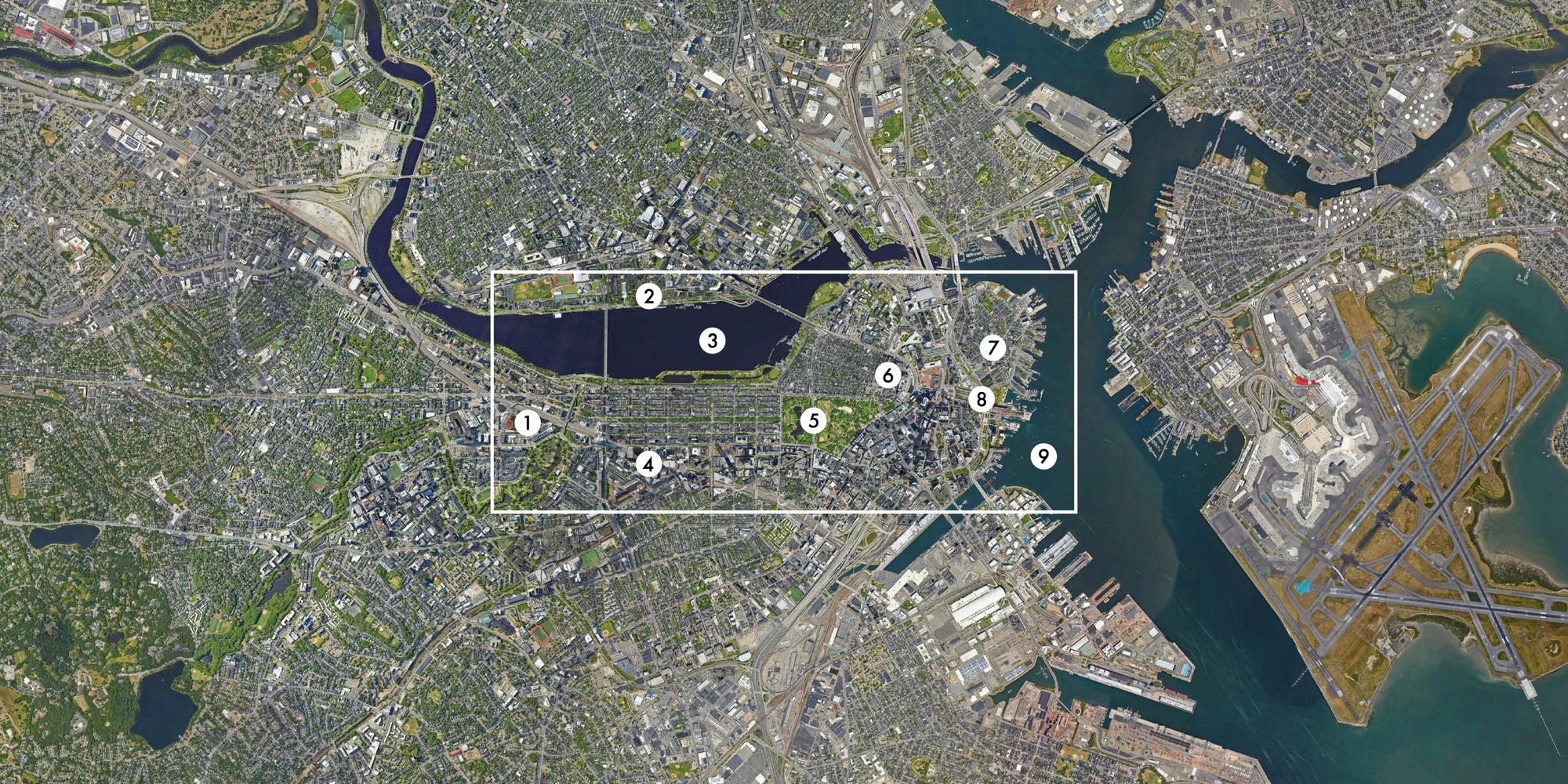
MAP LOCATION
1. Fenway Park
2. Massachusetts Institute of Technology
3. Charles River
4. Prudential Center
5. Public Garden + Boston Common
6. Massachusetts State House
7. North End
8. Faneuil Hall
9. Boston Harbor













